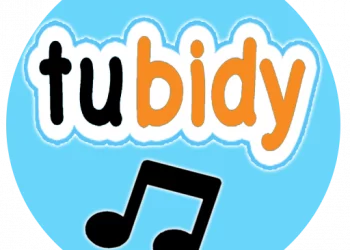Earlier, UX designers didn’t get to choose which tool to use for their projects. The only issue was the operating system — Mac or PC. And at that time, everyone was using Adobe. Today, the situation is different. Regardless of the size of your project, you will come across an incredible amount of options and tools that can help you with the UX design.
It’s easy to get lost here. All these tools fall under different categories and help you with different design tasks. There are tools that help you create a prototype of your future site’s design. Also, there is a huge number of wireframing tools, and their purpose is to create a quality design blueprint. And of course, there are holistic tools that combine all of the above (and not only) functions.
In our article, we will put together a small list of tools that are definitely worth your attention today. But first…
What really matters?
It’s worth noting that we are not going to focus on such criteria as the specification of a tool or its cost. Again, there is a huge number of tools, and you are able to combine several of them to cover all bases or use one holistic instrument. When it comes to costs, companies are sometimes eager to save $20 per month on a tool just to end up losing hundreds on clients’ orders. This is a common mistake that is caused by an obvious reason — the desire to minimize your expenses. Nevertheless, increasing the efficiency of your team is always the ultimate goal. Do not forget about it.
What we’ve taken into account is the convenience and usefulness of a tool for design teams. A good designer should master the key tools and easily switch between them.
So, let’s move to the list of the best UX design tools (in our view).
Sketch

Originally created for image editing, Sketch is now among the industry leaders and is used to design both mobile and web projects.
In terms of functionality, Sketch can be compared with Photoshop since the application is multi-purpose. However, Sketch is especially popular among web designers because it uses CSS logic. This feature allows you to immediately move from the process of creating an idea directly to designing.
One of the key features of Sketch is its incredible simplicity. The tool can be called customer-oriented, so even a person without proper design skills can easily understand Sketch. This makes the tool a good choice for design teams that work directly with clients.
However, there are also disadvantages — Sketch works only on macOS.
Figma
Everyone who has heard or used Sketch knows about the Figma application. In fact, this is the main rival of Sketch in the market today. Considering functionality, the tool is not very different from the previous one. However, it has a number of advantages.
Figma works on both macOS and Windows. In addition, the tool has a very convenient web version, which allows the design teams to work in real-time. This can be compared with Google Docs, though this is a web design application. You might think that its operation is intermittent and not smooth, but this is not so. Figma is reliable and therefore, is very popular among designers.
Thus, the application is a versatile tool that allows you to establish effective collaboration between design teams.
Zeplin
Another tool that facilitates collaboration between teams is Zeplin. But it aims at improving the interaction between designers and developers, the so-called design Hand-Off. In fact, if you enter the term in Google, the search engine will immediately advise you Zeplin. This tool allows designers to transfer their style guidelines directly to the development environment. Thus, the developers can immediately start coding with the design vector in mind.
Thinking about the advantages of Zeplin, you can get confused because there are lots of them. For example, Zeplin works well with Sketch via a special plugin. Also, the tool is very user-friendly and team-oriented. Zeplin allows you to organize screens, leave bookmarks, etc. Active community and style guiding can also be considered as a benefit.
However, there are also disadvantages. Zeplin doesn’t have a prototyping feature. But, the tool allows you to create one project for free, so the deal is fair, isn’t it?
Optimizely
The last tool on our list is for testing. Optimizely allows you to conduct A/B testing and compare two ready-made versions of your product. A big plus is a code-free interface (visual editor), which allows designers who are not well-versed in technical matters to perform tests with ease.
Optimizely also provides excellent personalization, which is an undeniable advantage. The tool saves the data of your visitors, which allows you to analyze their behavior and make necessary changes to your UI.
Optimizely is a full-stack tool, so it works with applications written in almost any of the most usable languages (PHP, Java, JS, etc.).
The tool has two subscription plans — Starter and Enterprise. The first one is completely free.
To sum up
Of course, it is difficult to fit the entire list of the most useful design tools in one article. The truth is that there are too many of them and each carries its own value. So, the choice is always yours, and most often it is determined by the specifics of a particular project that you are working on.
However, the tools mentioned above are an integral part of the work of any modern designer, so it will be difficult for you to meet a specialist who is not familiar with them.












